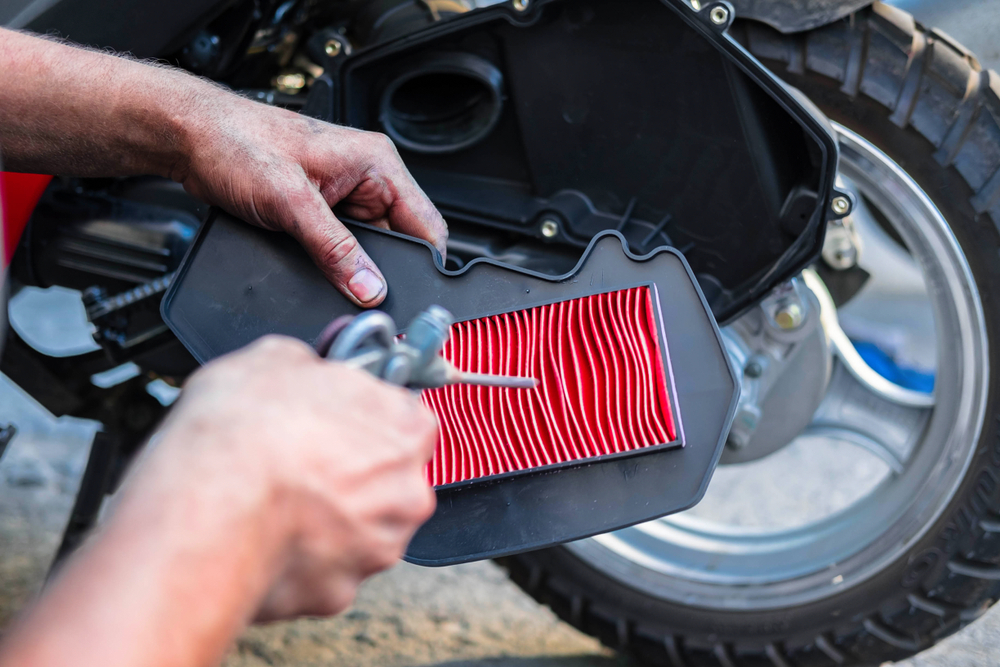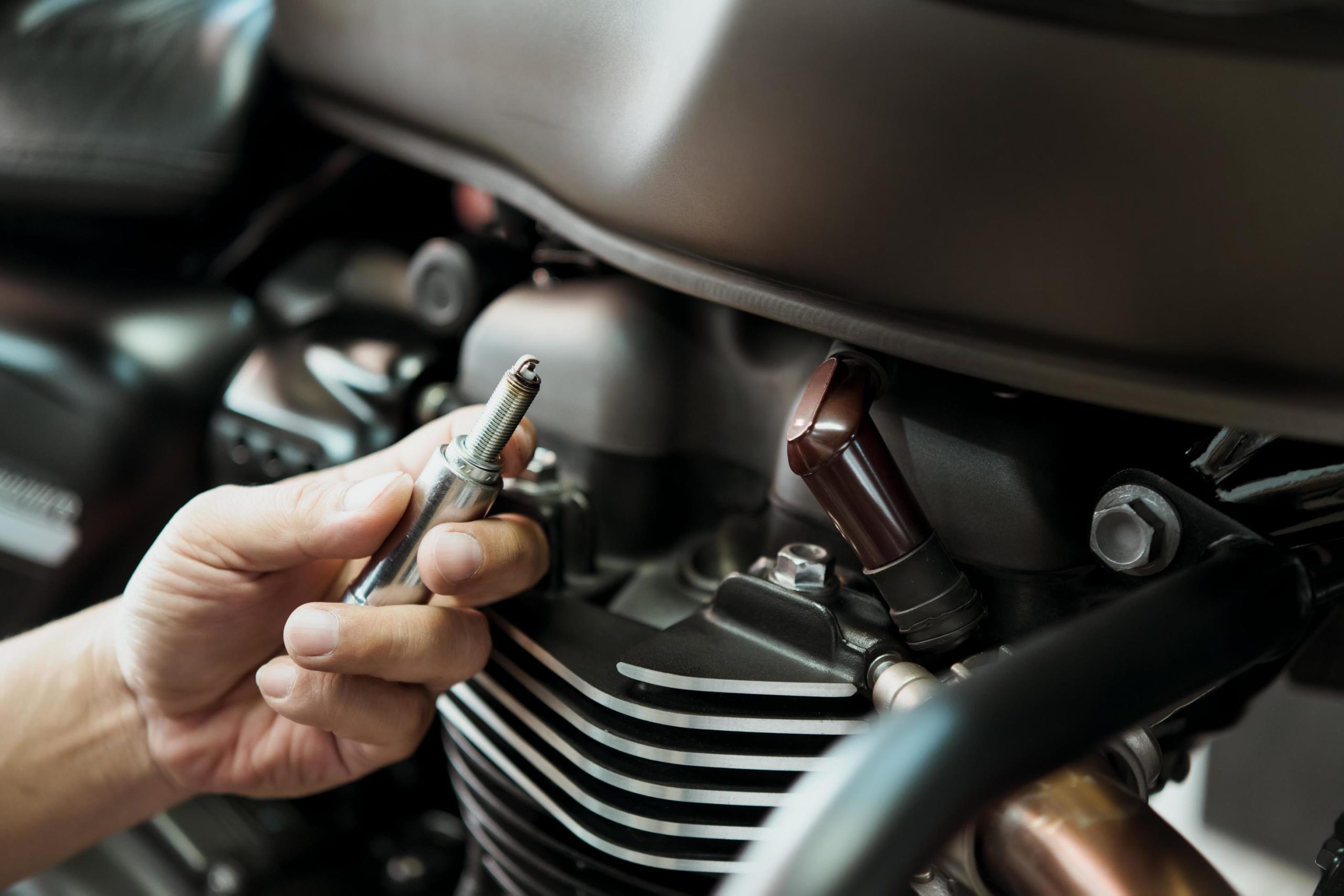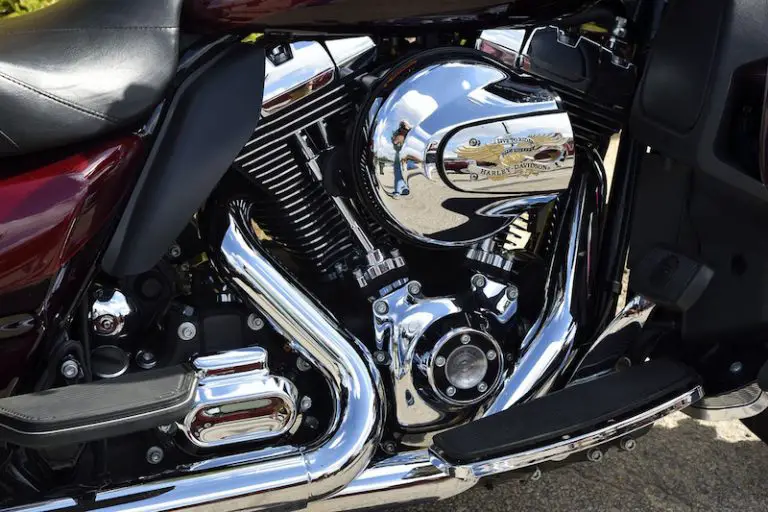Owning a motorcycle can be an exhilarating experience, offering freedom on the open road and a sense of adventure. However, maintaining your motorcycle’s engine and ensuring its longevity requires careful attention and regular upkeep. Neglecting engine maintenance can lead to costly repairs and reduce the lifespan of your beloved bike.
Fortunately, there are several proactive measures you can take to extend your motorcycle’s engine life, ensuring that it remains in top condition for years to come. In this comprehensive guide, we will explore essential tips and practices that every motorcycle owner should follow.
From regular oil changes to proper storage techniques, these steps will help you maximize your engine’s performance and longevity. By implementing these practices, you can enjoy a smoother and more reliable ride, while also preserving the value of your motorcycle. Let’s see the ultimate guide to extending your motorcycle’s engine life.
1. Regular Oil Changes
Regular oil changes are fundamental to maintaining your motorcycle’s engine health and extending its lifespan. Engine oil lubricates the moving parts, reduces friction, and helps to dissipate heat. Over time, the oil can become contaminated with dirt, debris, and combustion by-products, which can decrease its effectiveness and potentially lead to increased engine wear or damage.
To keep your motorcycle running smoothly, it’s essential to follow the manufacturer’s recommended oil change intervals. These intervals can typically be found in the owner’s manual. Using high-quality motorcycle-specific oil that meets or exceeds the required specifications is also crucial. Synthetic oils are often recommended because they offer better lubrication and longer-lasting protection compared to conventional oils.

When performing an oil change, it’s important to replace the oil filter as well. The filter traps contaminants and prevents them from circulating through the engine. Skipping this step can render your oil change less effective. Ensuring that the oil level is always within the recommended range can prevent oil starvation, which can cause severe engine damage.
Adhering to a consistent oil change schedule, using high-quality oil and filters, and following the manufacturer’s guidelines can significantly prolong your motorcycle engine’s life. Regular oil changes are an investment in your bike’s future, ensuring that it remains reliable and performs at its best.
2. Proper Air Filter Maintenance
Maintaining a clean and functional air filter is crucial for your motorcycle’s engine health. The air filter’s primary role is to prevent dirt, dust, and debris from entering the engine’s combustion chamber. If the air filter becomes clogged or dirty, it can restrict airflow, leading to a rich air-fuel mixture, reduced engine performance, increased fuel consumption, and potential engine damage.
To keep your air filter in top condition, it’s important to inspect and maintain it regularly. The frequency of maintenance depends on your riding environment. If you often ride in dusty or dirty conditions, you may need to check and clean or replace the air filter more frequently. Consult your owner’s manual for specific maintenance intervals and procedures.

Cleaning a reusable air filter involves removing it from the motorcycle, gently tapping out loose dirt, and washing it with a suitable cleaner. After rinsing and drying, you can apply air filter oil if required. For disposable air filters, simply replace them with a new one.
Ensuring that the air filter is always in good condition helps to maintain optimal airflow, improve engine performance, and prevent premature wear. By keeping your air filter clean and properly maintained, you can protect your engine from contaminants and extend its life.
3. Monitor Coolant Levels
Maintaining the correct coolant levels is vital for keeping your motorcycle engine at its optimal operating temperature and preventing overheating. The coolant system plays a crucial role in absorbing excess heat from the engine and dissipating it through the radiator. Without adequate coolant, the engine can overheat, leading to severe damage such as warped cylinder heads and blown gaskets.
Regularly checking your motorcycle’s coolant level is a simple yet essential maintenance task. To do this, ensure the engine is cool and then locate the coolant reservoir. The coolant level should be between the minimum and maximum marks on the reservoir. If it’s low, top it off with the correct type of coolant specified in your owner’s manual. Using the wrong type of coolant can result in poor heat dissipation and potential engine damage.

In addition to checking the coolant level, it’s important to inspect the coolant itself for signs of contamination or degradation. Discoloration, debris, or a foul smell can indicate that the coolant needs to be flushed and replaced. Following the manufacturer’s recommended coolant replacement intervals helps to ensure the cooling system operates effectively.
Properly maintaining the coolant system not only helps prevent overheating but also extends the life of your motorcycle’s engine. By regularly monitoring and maintaining coolant levels, you can safeguard your engine against heat-related damage and ensure reliable performance.
4. Fuel System Care
A well-maintained fuel system is essential for optimal engine performance and longevity. Over time, fuel injectors or carburetors can become clogged with deposits, affecting fuel delivery and engine efficiency. Additionally, poor-quality fuel or prolonged storage can lead to fuel degradation, causing varnish or gum to form and clog the fuel system.
To keep your fuel system in top condition, always use high-quality fuel from reputable sources. Avoid letting your motorcycle sit with old fuel for extended periods, as this can lead to fuel degradation. If you anticipate not riding your bike for a while, consider using a fuel stabilizer to prevent the fuel from breaking down.
Regularly inspect and clean the fuel injectors or carburetor according to the manufacturer’s recommendations. Cleaning involves removing any deposits or buildup that can hinder fuel flow. Replacing the fuel filter as recommended by the manufacturer is also essential, as it prevents contaminants from reaching the engine and ensures a clean fuel supply.
Proper fuel system care also involves regularly checking for any signs of leaks or fuel line wear. Addressing these issues promptly can prevent fuel-related problems and maintain optimal engine performance. By keeping the fuel system clean and well-maintained, you can ensure consistent performance, improve fuel efficiency, and extend the life of your motorcycle’s engine.
5. Spark Plug Maintenance
Spark plugs play a vital role in the combustion process by igniting the air-fuel mixture in the engine. Over time, spark plugs can become worn or fouled, leading to poor engine performance, reduced fuel efficiency, and difficulty starting the motorcycle. Regular inspection and maintenance of the spark plugs are essential for reliable engine operation.
Inspect your motorcycle’s spark plugs periodically, following the manufacturer’s recommendations for replacement intervals. Signs of wear include eroded electrodes, excessive carbon buildup, or oil fouling. If the spark plugs show any of these signs, it’s time to clean or replace them to ensure optimal ignition performance.

When replacing spark plugs, use the correct type and heat range specified in the owner’s manual. Using the wrong spark plugs can lead to engine misfires and potential damage. Properly gapping the spark plugs according to the manufacturer’s specifications is also crucial for efficient combustion.
Regular spark plug maintenance ensures that the engine runs smoothly and efficiently, providing consistent power and performance. By taking care of your spark plugs, you can enhance fuel efficiency, reduce emissions, and extend the life of your motorcycle’s engine.
6. Maintain Proper Chain Tension
For motorcycles equipped with chain drives, maintaining proper chain tension is crucial for engine health and performance. An improperly tensioned chain can cause excessive wear on the sprockets and drive components, leading to increased stress on the engine and transmission.
Regularly checking and adjusting the chain tension according to the manufacturer’s specifications helps ensure smooth and efficient power transfer. A properly tensioned chain should have the correct amount of slack, allowing for smooth movement without being too tight or too loose.

In addition to adjusting the tension, regularly lubricate the chain to reduce friction and wear. Using a high-quality chain lubricant helps to prevent rust and corrosion, extending the life of the chain and sprockets. Inspect the chain for signs of wear, such as stretched links or damaged rollers, and replace it if necessary.
Proper chain maintenance ensures a smoother ride, reduces the risk of chain-related issues, and prolongs the life of your motorcycle’s engine and drivetrain components. By keeping the chain properly tensioned and lubricated, you can maintain optimal performance and protect your investment.
7. Proper Storage Techniques
How you store your motorcycle can significantly impact its engine life. Improper storage can lead to issues such as corrosion, fuel degradation, and battery drain. To protect your motorcycle during periods of inactivity, follow proper storage techniques.
Before storing your bike, perform a thorough cleaning to remove dirt and grime. Fill the fuel tank and add a fuel stabilizer to prevent fuel degradation. Disconnect the battery or use a trickle charger to maintain its charge. Store the motorcycle in a cool, dry place, preferably under a cover to protect it from dust and moisture. Raising the bike on stands can prevent tire flat spots.
Proper storage techniques help prevent deterioration and ensure your motorcycle is ready to ride when you take it out of storage. By taking the time to store your bike correctly, you can preserve its condition, maintain engine health, and extend its lifespan.
8. Regular Valve Adjustments
Valve adjustments are a critical maintenance task that ensures your engine’s valves open and close correctly, allowing for proper airflow and combustion. Over time, valve clearances can change due to wear and heat expansion, affecting engine performance and longevity.

Follow the manufacturer’s recommended intervals for valve adjustments, which can typically be found in the owner’s manual. Performing regular valve adjustments helps maintain optimal engine performance, fuel efficiency, and longevity. If you’re not comfortable performing this task yourself, have it done by a qualified mechanic.
Regular valve adjustments ensure that your engine operates smoothly and efficiently, preventing potential damage and extending its life. By keeping the valves properly adjusted, you can maintain your motorcycle’s performance and reliability.
9. Regularly Check for Leaks
Engine leaks can lead to significant issues if left unaddressed, including low oil levels, coolant loss, and potential engine damage. Regularly checking for leaks and addressing them promptly can help prevent more severe problems down the road.
Inspect your motorcycle for any signs of oil, coolant, or fuel leaks. Common areas to check include the engine, transmission, and cooling system. If you notice any leaks, identify the source and repair it as soon as possible. Regularly checking for leaks and addressing them promptly can help maintain your engine’s health and prevent costly repairs.
10. Pay Attention to Warning Signs
Being attentive to your motorcycle’s performance and any warning signs can help you address issues before they become major problems. Unusual noises, vibrations, or changes in performance can indicate underlying issues that need immediate attention.
Pay close attention to how your motorcycle sounds and feels while riding. If you notice any unusual symptoms, such as knocking sounds, excessive vibrations, or a loss of power, investigate the cause and address it promptly. Unusual noises can indicate problems like engine knocking, worn-out bearings, or loose components. Excessive vibrations might point to issues with the suspension, wheels, or engine mounts. Changes in performance, such as a sudden decrease in power, can be a sign of fuel system problems or engine wear.
Regularly monitoring your motorcycle’s performance and addressing warning signs early can help prevent more severe engine damage. For example, if you notice a decrease in fuel efficiency, it might indicate a clogged air filter or fuel injectors, which can be easily fixed with proper maintenance. Ignoring these signs can lead to more extensive and costly repairs down the road.
By paying attention to warning signs and addressing them promptly, you can maintain your motorcycle’s performance, ensure a safe riding experience, and extend the life of your engine. Regular check-ups and listening to your bike can make a significant difference in its longevity and reliability.
Extending your motorcycle’s engine life requires a combination of regular maintenance, proper care of critical components, and attentiveness to warning signs. By following these essential tips, you can ensure your engine remains in top condition, providing a smoother and more reliable ride. Regular oil changes, proper air filter maintenance, monitoring coolant levels, and caring for the fuel system are all crucial practices.
Additionally, spark plug maintenance, maintaining proper chain tension, and following proper storage techniques play vital roles. Regular valve adjustments, checking for leaks, and paying attention to performance warning signs are also essential. Implementing these practices will help you preserve your motorcycle’s value and enjoy the thrill of riding for years to come. Taking proactive steps in maintaining your motorcycle not only ensures its longevity but also enhances your riding experience.

